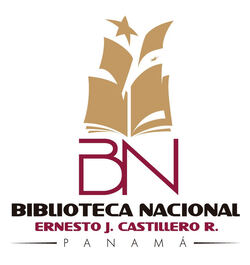The content of the publications and the links suggested in them are the sole responsibility of the authors and not of the Metropolitan University of Education, Science and Technology (UMECIT) or of the journal ORATORES. They are protected by international copyright laws as well as the logos of UMECIT AND ORATORES, hence their reproduction is totally prohibited.
This work is licensed under a Creative Commons Attribution-NonCommercial-NoDerivatives 4.0 International License.
The authors maintain the copyright and transfer the right of the first publication to the journal, with the article registered with Creative Commons Attribution-NonCommercial-NoDerivatives License, which allow others They can download the works published in this magazine and share them with other people, as long as their authorship is recognized, but they cannot be changed in any way nor can they be used commercially.
Authors are recommended to include their work in social networks such as Researchgate and institutional repositories once the article or visible fact has been published on the journal page, without forgetting to include the digital document identifier and the name of the journal.



Abstract
Music has been an element that has provided diverse contributions to the cinematographic language. At present it is very difficult to find a film that does not contain any type of musical accompaniment. There are several bibliographies about the role that musicalization plays in movies. However, the vast majority of studies conducted on how music influences the audience that attends to watch a film are of a qualitative nature. This research demonstrates the degree of correlation between the variables: perception of the functions of the music in the film and perception of the film. The instrument (cronbach alpha of 0.95) was applied to a sample of 500 people attending the University Cinema of the University of Panama. The results were tested against Kendall's Tau-B. It is concluded, from the statistical tests, that for the study sample there is an association between the variables (p <0.01) but the strength of the correlation is moderate (Tau_b 0.466). Also, that the function of music that has the highest correlation is; if the music allowed to give rhythm to the film.
Keywords
References
Beltrán Moner, R. (1991). Ambientación musical. Selección, montaje y sonorización. Madrid: Instituto Oficial de Radio Televisión Española.
Bordwell, D., & Thompson, K. (2003). Arte Cinematográfico. México D.F.: McGraw-Hill Interamericana.
Díaz Yerro, G. (2011). El análisis de la música cinematográfica como modelo para la propia creación musical en el entorno audiovisual. Las Palmas de Gran Canaria : Universidad de Las Palmas de Gran Canaria .
EcuRed. (s.f.). EcuRed. Obtenido de EcuRed: https://www.ecured.cu/Pel%C3%ADcula
Gaona Pallares, E., & Abadía Guzmán, J. (2015). Crecimiento de la musicalización del cine en Panamá. Panamá: Universidad de Panamá.
Gubern, R. (2014). Historia del cine. Barcelona: Editorial Anagrama.
Gustems, J. (2015). Música y sonido en los audiovisuales. Barcelona: Publicacions i Edicions de la Universitat de Barcelona.
Heredia, F., Garrido, D., & Carnicer, J. (2014). SOUND CHARACTERISTICS ON FILM TRAILERS. Vivat Academia, 17(129), 1-9.
Larson Guerra, S. (2010). Pensar el sonido. México D.F.: Universidad Nacional Autònoma de Mèxico.
Lucas, A. M., García Galera, C., & Ruiz San Román, J. A. (1999). Sociologia de la Comunicación. Madrid: Editorial Trotta.
Morante, L. (2008). The overlapping of sound and the narrative structure of the audiovisual message. Revista Latina de Comunicación Social(63), 400-408.
Pérez, H. (2014). Música de Cine: John Williams & Steven Spielberg. Santa Fe: UNL.
Polo, M. (2008). La Estética de la Música. Barcelona: UOC.
Porta, A. (2006). Cine, música y aprendizaje significativo. Comunicar, 106-113.
Radigales, J. (2015). La música en el cine. Barcelona: UOC.
Sector Cine. (13 de 9 de 2017). Sector Cine. Obtenido de Sector Cine: https://sectorcine.com/noticias/nota/el-efecto-kuleshov/
Stewart, H. (28 de Septiembre de 2013). BBC. Obtenido de BBC: http://www.bbc.com/mundo/noticias/2013/09/130921_cine_musica_manipulacion_finde
University of Oslo. (7 de Mayo de 2015). ScienceDaily. Recuperado el 15 de Enero de 2017, de ScienceDaily: https://www.sciencedaily.com/releases/2015/05/150507082439.htm
Vigo Dávila, A. A., & De La Flor Arbulú, M. (2014). Influencia De La Banda Sonora En La Evaluación De Personajes De Una Película. Lima: Pontificia Universidad Católica del Perú.
Zuazu, M., & Canon, R. (2014). Las músicas de Betty, la fea. Revista de Música Latinoamericana, 1-24.
Downloads
Publication Facts
Reviewer profiles N/A
Author statements
- Academic society
- Universidad Metropolitana de Educación, Ciencia y Tecnología
- Publisher
- Universidad Metropolitana de Educación, Ciencia y Tecnología



















